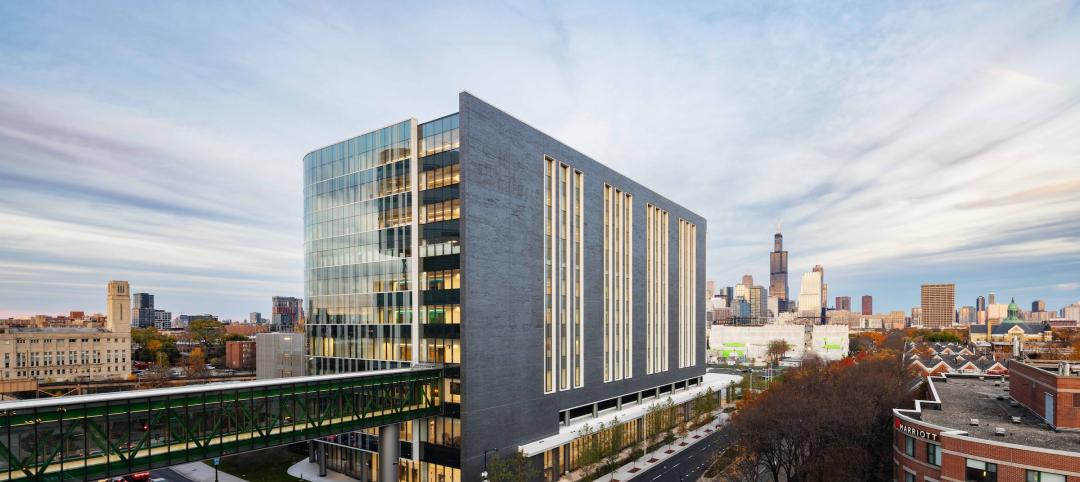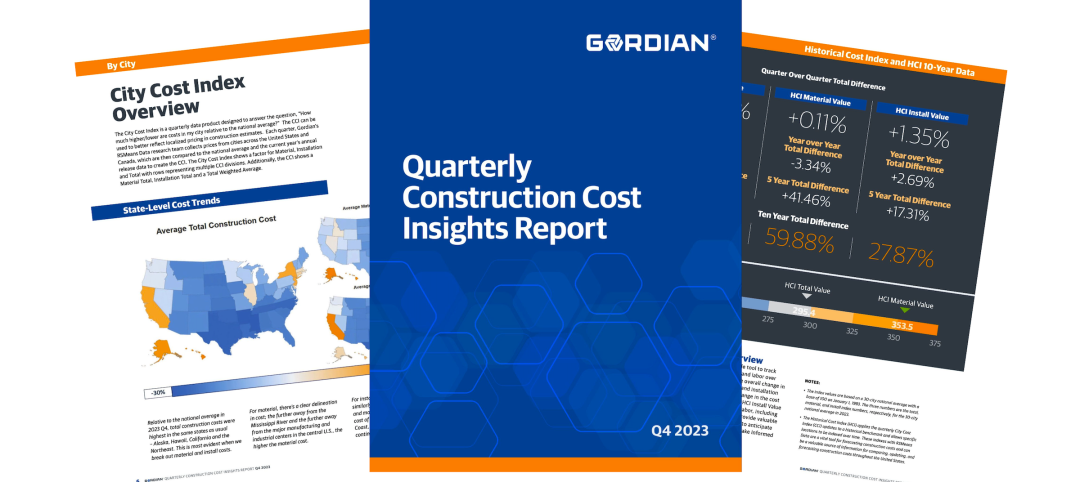BD+C: Why do you state that cities are “our greatest invention”?
Edward Glaeser: Cities matter because they magnify mankind’s greatest strengths. They help form the chains of collaboration and creativity that are behind everything that mankind has been able to do. Mankind’s greatest talent is the ability to learn from each other, and we learn more deeply and thoroughly when we’re face-to-face.
BD+C: You state that massive construction projects—stadiums, light rail, convention centers, etc.—cannot “stem the tidal forces of urban change.” Should mayors and city councils in declining cities just give up?
EG: I believe that there’s been a tendency to confuse cities with their structures. Cities are their people. There are places that need more structures, and they need fewer barriers to development. When you have artificial barriers, such as unrealistic height restrictions and burdensome environmental impact reports, there are tremendous costs from that. Declining areas have too many structures compared to the number of people.
The terrible thing about this strategy is that cities like Detroit need to invest in their children, so that they have the skills to survive in this economy. New sports arenas and the like are enormously expensive and distract city councils and mayors from the core business of providing a brighter future for the children of their cities through education.
BD+C: Detroit has become the poster child of the declining city. Do you have any advice for Mayor Dave Bing?
EG: If you look across the older colder-climate cities, the cities that have come back are those with the largest share of college degrees. Only 12% of Detroit adults have college degrees. I think Mayor Bing is being realistic about Detroit’s prospects. He’s a businessman. I would push him most on leveraging power of things like charter schools, and on top of that, fighting back against some of the regulations that still make it difficult to do business in the city. I was there recently, and there was a woman who was trying to start a business, a food truck, and she couldn’t get a permit because of regulations.
BD+C: “Poverty is usually a sign of a city’s success,” you write.
EG: The key point is that, throughout much of the world, cities attract poor people with the promise of jobs, cheap transportation, relatively affordable housing, and social services. That’s something cities shouldn’t be ashamed of.
BD+C: You advocate reducing the home mortgage interest deduction, which you cleverly call “a sacred cow in need of a good stockyard.” Aren’t you swimming in shark-infested waters here?
EG: It’s the job of an academic to do that. But there are two signs that this is being considered. The Administration’s federal housing finance reform package came out with a clear message that we should not be encouraging everyone to become a homeowner; and in the President’s budget, he sees a restriction on the amount of deductions you could take. The plan I like is to lower the upper limit of $1 million by $100,000 a year over several years.
BD+C: You comment on policies for “aesthetic interventions,” as espoused by the urbanist Richard Florida, versus “urban basics,” like public safety and good schools. Could you expand on that?
EG: Good public art is good, if it’s cheap. But you can’t tell a mayor that you really should have a public arts program, rather than getting the schools in order and having a well-functioning police department. The arts can’t be seen as something that’s going to trump the basics.
Take the case of Bilbao. That museum certainly generated a lot of tourism, but how many jobs were created? Bilbao is the one such project that hit the jackpot. How many others were subsidized, as in Sheffield, England, where the National Centre for Popular Music closed the year it opened. These projects come and go, with massive subsidies, and you have to be wary of them.
BD+C: What about the balkanization of our school districts? Should school funding be more equalized, no matter where the child lives?
EG: This is obviously a huge issue. The most helpful things we have seen so far have been the charter schools. Being an economist, I think competition among schools is the best way to keep upwardly mobile families staying in the city. The great urban virtues are competition and entrepreneurship, and that’s what we’ve not done with our public schools, which are large public monopolies. And because cities do attract poor people, for many reasons, it shows how hard it is to move that dial, even when, as in Chicago and New York and Washington, D.C., you have some of the best people working on the problem.
BD+C: You also state that immigration is “essential to urban success.” That’s hardly a popular sentiment in many parts of the U.S.
EG: Immigration is absolutely essential to the success of our cities. The case is easiest to make for H-1B visas, where we get skilled workers who are going to add energy to the economy, pay more in taxes than they’re going to take out, and who are not going to cause social problems. We should be enabling more people who are skilled and want nothing more than to work in America. Cities are good for immigrants and immigrants are good for cities. BD+C
Related Stories
Senior Living Design | Jan 24, 2024
Former Walgreens becomes affordable senior living community
Evergreen Real Estate Group has announced the completion of Bellwood Senior Apartments. The 80-unit senior living community at 542 25th Ave. in Bellwood, Ill., provides independent living options for low-income seniors.
AEC Tech | Jan 24, 2024
4 ways AEC firms can benefit from digital transformation
While going digital might seem like a playground solely for industry giants, the truth is that any company can benefit from the power of technology.
Giants 400 | Jan 23, 2024
Top 60 Parking Structure Architecture Firms for 2023
Choate Parking Consultants, Page Southerland Page, Gensler, AO, and Elkus Manfredi Architects top BD+C's ranking of the nation's largest parking structure architecture and architecture engineering (AE) firms for 2023, as reported in the 2023 Giants 400 Report.
Industry Research | Jan 23, 2024
Leading economists forecast 4% growth in construction spending for nonresidential buildings in 2024
Spending on nonresidential buildings will see a modest 4% increase in 2024, after increasing by more than 20% last year according to The American Institute of Architects’ latest Consensus Construction Forecast. The pace will slow to just over 1% growth in 2025, a marked difference from the strong performance in 2023.
Giants 400 | Jan 23, 2024
Top 110 Medical Office Building Architecture Firms for 2023
SmithGroup, CannonDesign, E4H Environments for Health Architecture, and Perkins Eastman top BD+C's ranking of the nation's largest medical office building architecture and architecture engineering (AE) firms for 2023, as reported in the 2023 Giants 400 Report.
Giants 400 | Jan 22, 2024
Top 100 Outpatient Facility Architecture Firms for 2023
HDR, CannonDesign, Stantec, Perkins&Will, and ZGF top BD+C's ranking of the nation's largest outpatient facility architecture and architecture engineering (AE) firms for 2023, as reported in the 2023 Giants 400 Report. Note: This ranking includes design revenue for work related to outpatient medical buildings, including cancer centers, heart centers, urgent care facilities, and other medical centers.
Construction Costs | Jan 22, 2024
Construction material prices continue to normalize despite ongoing challenges
Gordian’s most recent Quarterly Construction Cost Insights Report for Q4 2023 describes an industry still attempting to recover from the impact of COVID. This was complicated by inflation, weather, and geopolitical factors that resulted in widespread pricing adjustments throughout the construction materials industries.
Transit Facilities | Jan 22, 2024
Top 40 Transit Facility Architecture Firms for 2023
Perkins&Will, HDR, Gensler, Skidmore, Owings & Merrill, and HNTB top BD+C's ranking of the nation's largest transit facility architecture and architecture engineering (AE) firms for 2023, as reported in the 2023 Giants 400 Report. Note: This ranking includes design revenue for work related to bus terminals, rail terminals, and transit stations.
Hotel Facilities | Jan 22, 2024
U.S. hotel construction is booming, with a record-high 5,964 projects in the pipeline
The hotel construction pipeline hit record project counts at Q4, with the addition of 260 projects and 21,287 rooms over last quarter, according to Lodging Econometrics.
Modular Building | Jan 19, 2024
Virginia is first state to adopt ICC/MBI offsite construction standards
Virginia recently became the first state to adopt International Code Council/Modular Building Institute off-site construction standards.

















